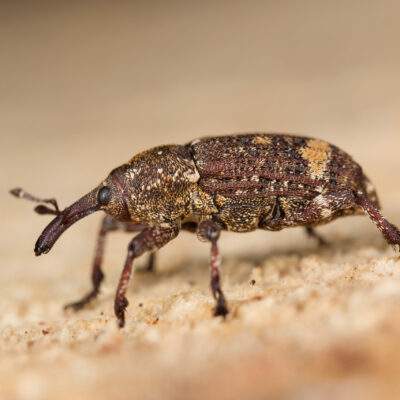White Pine Weevil
The White Pine Weevil (Pissodes strobi) is a type of weevil that is native to North America. It is a pest of conifers, particularly White Pine and other species of pine trees. Adult weevils are about 5mm long, have a dark brown or black body with a curved snout and a distinctive white band on their hind legs. They are active in the spring, laying eggs in pine cones or newly expanding shoots of young trees.
The larvae are legless and white with a brown head. They feed within the terminal shoots of the trees, causing them to wilt and die. As the larvae mature, they pupate within the dead shoot and emerge as adult weevils, continuing the cycle of damage. This feeding can cause significant stunting or death of young trees, and in some cases, kill older trees.
Control measures for White Pine Weevil can include removing and destroying infested shoots and applying insecticides. Preventative measures, such as wrapping young trees with protective material, can also help to reduce damage from the weevil. Cultural practices, such as proper planting techniques and avoiding over-fertilization, can also help to reduce the likelihood of an infestation.
It is important to monitor pine trees regularly for signs of damage and infestation, and to take action promptly if necessary to prevent serious harm to the trees. By taking appropriate steps, the impact of White Pine Weevil on pine trees can be minimized, helping to ensure the health and vitality of these important trees.

